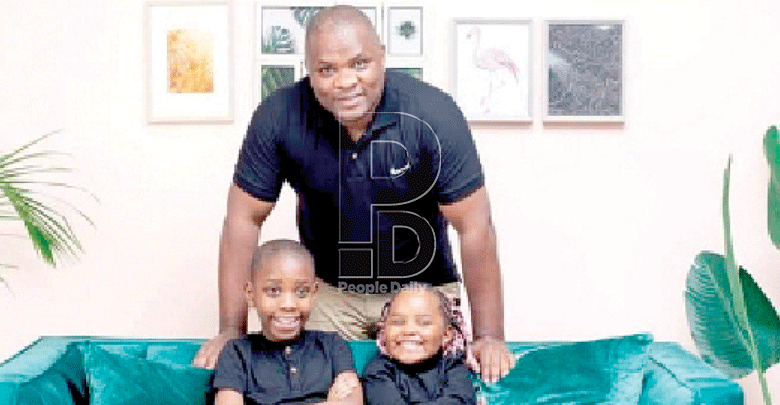Choosing the right toy for your child

Give a kid a new toy – almost any toy – and chances are, you will have a happy kid. They are more than just playthings, though, and while they should be fun, they should also be age-appropriate, stimulating, and safe.
Experts attest to the fact that play is important in the social, physical and emotional development of children; hence toys should be thought of as developmental learning tools.
Alice Kibagendi, Founder of Amara Initiative and a mother of two children aged six and one agrees that toys are an important part of a child’s development.
“Toys are useful in teaching toddlers colours, shapes, sizes, and the virtue of sharing. They cause excitement and fun.
I always ensure that the toys I buy for my children are age appropriate and help to enhance a skill as well as aid in their mental and physical development,” says Kibagendi.
Points to note
In addition, toys are good to have because they may be used for entertainment.
“It’s not a must you buy a toy. In some instances, a toy may be made at home or may be something from the home setting such as a cooking stick, cushion, among others, as long as it causes no safety risk to the child,” she says.
She adds: “I find myself picking toys that are too big to be swallowed. I think of the risks some toys may pose in terms of safety and try to balance between the usefulness of a toy and safety.
Additionally, when talking about safety and selecting toys for toddlers, consider slightly larger toys.
I consider toys that cannot go through the hole of a tissue paper roll. This means a child won’t be able to swallow them while playing. Also, avoid toys with sharp edges.”
Since toys are always marked for specific age groups, Kibagendi says it’s important to check the agent’s group recommendation and the value addition you are getting from the toy.
“Try to diversify the toys for each brings different values or skills,” she says.
Paul Mulemi, a father of two says when buying toys, he usually considers the child’s gender and preference.
“Boys will always love cars, automobiles, guns, blocks among others, while girls go for toys such as dolls, cookery utensils and the likes.
Therefore, as a parent, you must know what your child loves. Otherwise, you can buy a toy that he or she might reject,” says Mulemi.
Other factors he looks into when buying toys for his children are durability and age of the child.
“It is important to buy a toy as per the child’s age because some might be too advanced or too junior for the kid,” he says.
Ruth Vusaka is a mother of three children aged seven years, four years and six months.
“The seven-year-old doesn’t need toys any more. But generally for my children, I go for toys that are musical as well as educational, all in one package.
That is, toys that sing the alphabets, numbers and even greetings. They have helped develop their speech and physical movement too,” says Vusaka.
Like Kibagendi, Vusaka ensures safety when purchasing a toy. “I ensure that there are no sharp parts or edges that could prick or cut my little one.
I also go for durability. I still have most of the toys that my seven-year-old used about six years ago.
It is important to note that toys need not be expensive. This is because kids lose interest fast and outgrow the toys quickly,” she says.
Joan Kirera, a marriage and family therapist who doubles up as a child counsellor says depending with the age and purpose, toys can be used for different purposes.
“Some toys are used for entertainment, for therapy, motor and sensory enhancement, for training life skills and for educational purposes,” says Kirera.
Age-appropriate toys
According to Kirera, children below two years use toys to interact with their world. “They touch, listen to them, bang them together, and put the toys in their mouths.
At this stage, they learn when interacting with others and also learn on their own as they interact with their toys.
Any simple toys that produce sound, are easily bang able, and colourful ones would be most useful,” she says.
For those aged two to four years, Kirera says children at this stage do much of pretend play and they struggle to understand logic.
“As much as possible, children need toys that they can manipulate in order to improve imagination, learn skills, build creativity and build motor skills.
Such toys include manually movable toys, play dough, sticky objects, simple building blocks, kitchen sets, animals and building materials.”
And children aged five years and above think more logically and in an organised manner.
“At this point children need more complex toys that challenge their thoughts and improve their creativity.
Complex toys that can be assembled are more appropriate, for example, complex legos, puzzles and paint materials,” says Kirera.
Benefits and challenges
Kirera says toys help caregivers to attach with children as they engage in play together, improves creativity and imagination when used by children, promotes brain development, improves social and emotional ties, helps to create memories, improves peer interactions when children engage together, helps them to express themselves and release negative emotions.
She opines: “If a child uses electronic toys only or overuses the electronic toys, then he/she doesn’t benefit.
Toys such as baby laptops, phones or remote-controlled toys do not promote a lot of creativity or imagination.
These children end up having social and communication challenges. Excessive use of video games may also introduce children to aggressive behaviour.”
“A parent doesn’t have to buy all the toys; some toys can be created at home and such promote both creative imaginative skill and critical thinking,” says Kirera.
Asked whether toys can interfere with proper child development, Kirera says Yes, and No.
“Yes, if a child is not allowed any other free play, especially the outdoor activities, because any kind of play-outdoor or using toys enhances child development. No.
If a child is allowed free play together with available and involved parenting, they can have healthy development,” she explains.












